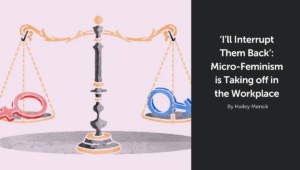While there’s an abundance of discussion, programs, and investments made in the pursuit of developing leaders, there’s a clear, parallel shortage of energy and resources dedicated to developing followers.
We know from the research on power that the brain is directly and often negatively impacted by increased power. We stop seeking others’ perspectives as much; we start focusing on achieving goals instead of caring for those around us; and we focus so much on vision that our optimism dampens our ability to fairly assess risk.
To make matters worse, all the trappings of power in an organizational setting amplify these psychological responses. Leaders literally become isolated. First class seats. Private offices. Exclusive floors. Dedicated support staff. (Need I say more?)
While these perks may be based on organizational status and the resources leaders control, none of that actually creates followership. So, what does?
Based on the decades I’ve spent working with leaders, I submit there are three essential beliefs that ultimate translate into how leaders behave.
Belief #1: I am not better than anyone else
Too often, leaders unintentionally conflate organizational status with personal worth. In reality, the role one plays in an organizational has nothing to do with their innate value. A CEO and their Executive Assistant have wildly different roles that the market compensates in radically different ways. But independent of that market dynamic, they are equal in value as people. How you treat someone signals how you value them.
How to generate followership: Treat others as if they matter more than you.
The people who surround a leader do not exist to serve them. Their true role is to help fulfill their own dreams and aspirations for themselves. Leaders should consider adding a new filter to their decision-making that assesses the impact of their ideas on those around them. Being able to articulate those considerations will super-charge their persuasiveness.
Belief #2: To be followed, I must be trusted
We know from the science that our brains crave certainty. One dimension of certainty is trust. To trust is to know and align oneself with the value system of another. At the core, organizational cultures are a direct reflection of their leaders. The shared, everyday habits that define a culture are molded by the behavior of leaders. Those with power either cultivate trust or destroy trust – there’s seldom a middle ground.
How to generate followership: Explicitly work on building trust.
Leaders should make it a priority to build trust, both directly and indirectly, with those around them. They must anticipate that how they treat any individual will become a viral part of their legacy. We know that power lessens our attention to others’ perspectives. We also know that our brains respond well when we change one habit at a time. The essential habit leaders need to reinvigorate is their desire to hear what others think. You don’t have to agree with what you hear, but you do have to ask and then reflect on what you’ve heard.
Belief #3: Leaders derive power from followers, not the other way around
Power is fleeting and hoarding is a bad strategy. The most secure path to lasting influence is the power of your followers — those who trust you, who align with your values, who believe in their bones that they matter to you.
How to generate followership: Give power away.
Let us stop using the word “empower” when we don’t mean it. Instead, leaders can tell others how much they need their expertise and feel comfortable keeping their distance because they don’t believe “I know best.” It’s OK for failures to happen. Few things build trust faster than knowing it’s psychologically safe to try, fail, and learn from your shortcomings.
The bottom line is, leaders would do well to acknowledge that the ultimate measure of their strength is their followership. Their leadership influence lives on through others, not just them. Which means that leaders without followers do not survive. So leaders, go out and show those followers why you’re worthy of following.
This article is the third installment in NLI’s new series, Transformation: The Master Class, a 4-week campaign to help leaders initiate and execute business transformation.
[action hash=”8409c87a-1249-42da-b606-315766aa54de”]






